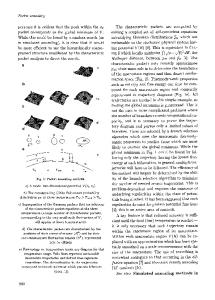Flow control and constrained optimization problems
Constrained optimization is presented as a key enabler for answering numerous important questions in the heart of flow control. These problems range from the extraction of Proper Orthogonal Decomposition modes and tools from linear control theory to optim
- PDF / 4,843,299 Bytes
- 76 Pages / 439.37 x 666.142 pts Page_size
- 22 Downloads / 338 Views
tion
The objective of this chapter is to present within the unified framework of constrained optimization problems, different numerical tools which change completely our ideas on flow control in the last decade. We will see in particular that reduced-order modeling based on Proper Orthogonal Decomposition modes (see the contribution by B. Noack et al. in this book), as well as classical techniques of linear control (Linear Quadratic Regulator and Linear Quadratic Gaussian methods) and optimal control, have in common the resolution of a constrained optimization problem. Beyond that, we will also show that the concept of optimal disturbances, introduced in stability theory to explain the transition to turbulence of linearly stable flows, can be also formulated as a constrained optimization problem and, if needed, be solved simultaneously to a control problem. Lastly, we will highlight that inverse methods (model identification or parameter estimation) can be interpreted as a particular constrained optimization problem. The objective is to give the possibility to the interested reader of rapidly developing by
2
L. Cordier
him/her-self the analytical and numerical solutions to the constrained optimization problem of his/her interest. The choice was thus made to detail as much as possible the different stages. The current chapter is organized as follows: In section 2.1, we introduce the issues of flow control and present, for facilitating future discussions, the different actors on the control scene. Then we introduce the linearized framework, often used in flow control, and finish by formulating a series of questions related directly to different aspects of flow control. In section 2.2, we give some essential elements of linear control theory and continue in section 2.3 by an introduction of model reduction seen under the specific angle of projection methods. In section 3, we focus on the fundamental aspects of optimal control theory. At this stage, the presentation will remain very similar to what can be found in Gunzburger (1997a) and more recently in Gunzburger (2003). Section 4 considers the case of LQR control for a generic system and shows that the solution of a high-dimensional Riccati differential equation is necessary to determine the feedback control law that minimizes the value of the cost function. Section 5 highlights that the determination of optimal disturbances corresponds to a constrained optimization problem for which the control is the initial condition of the dynamical system. Lastly, sections 6 and 7 consider the case where the constraint corresponds to a time-dependent partial differential equation, linear and nonlinear respectively. Section 7 finishes with some numerical results of optimal control for the Burgers equation.
2
Elements of control theory and model reduction
2.1
Flow control
First, in section 2.1.1, we give the scope of flow control and introduce the terminology necessary to present constrained optimization problems as a main topic in modern fluid mechanics. Then, in section 2.1.2, we introduc
Data Loading...











